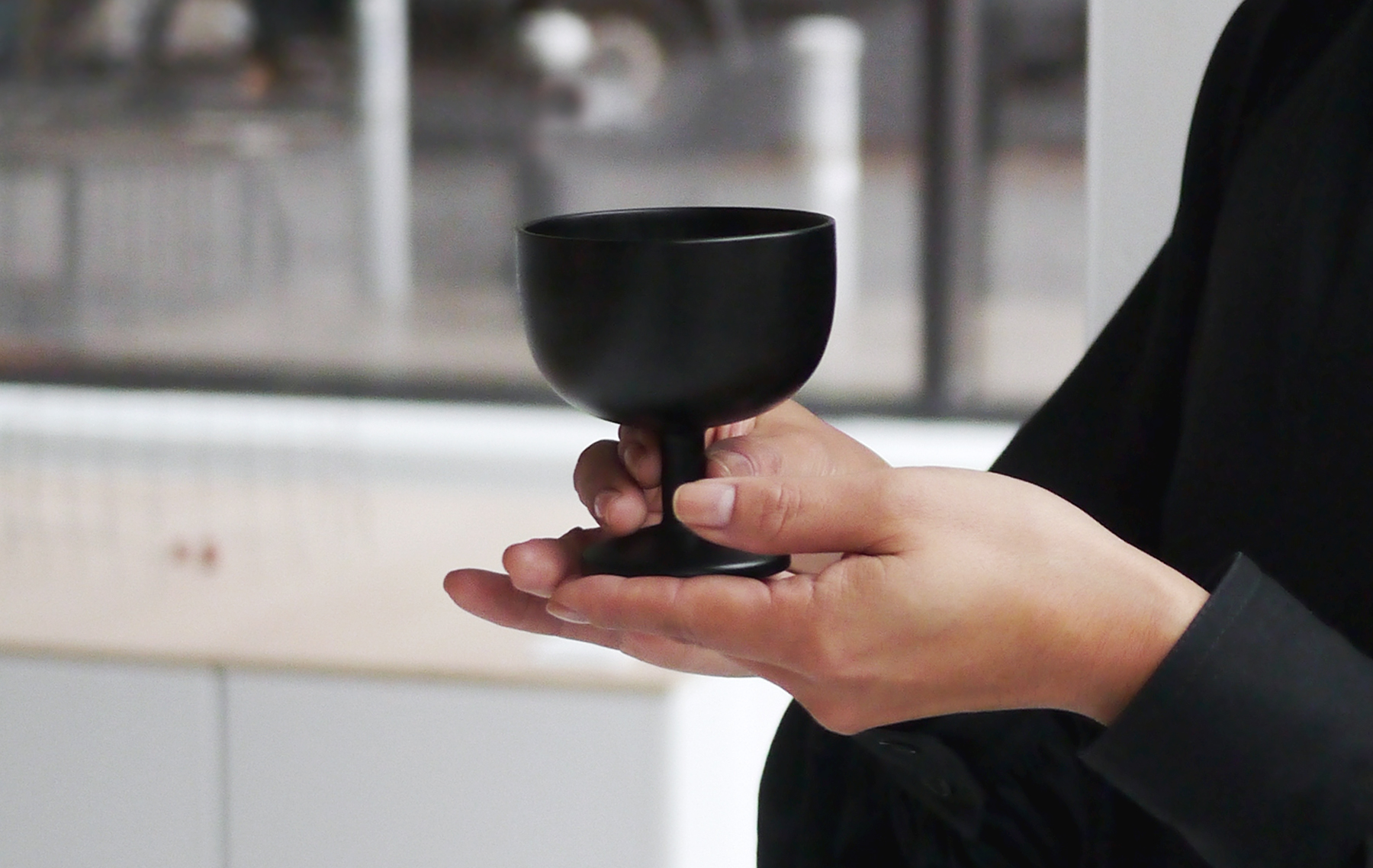A Guide to Hydroponics with 10¹² Terra

Even after years of growing plants hydroponically (without soil), I still find it to be fascinating. 10¹² Terra has made it into a beautiful art with their products that highlight the evolution of plant life, particularly the Hydro Terrarium that allows you to observe the roots of a succulent grow under water. Daisuke and Kenichi, the designers behind 10¹² Terra, have taught me so much about keeping succulents alive over the years. Since the Vision Glasses and Hydro Terrariums make great gifts, we get a lot of questions around this time of year so I thought it was about time we shared some tips and tricks. Although these instructions may look extensive, remember that it’s only a guide. There’s no formal process so don’t be put off. At the end the day I ask myself, does the plant look happy? If the answer is yes then everything’s gonna be alright… (listening to this while you plant helps too).
The Hydroponics How-To Guide
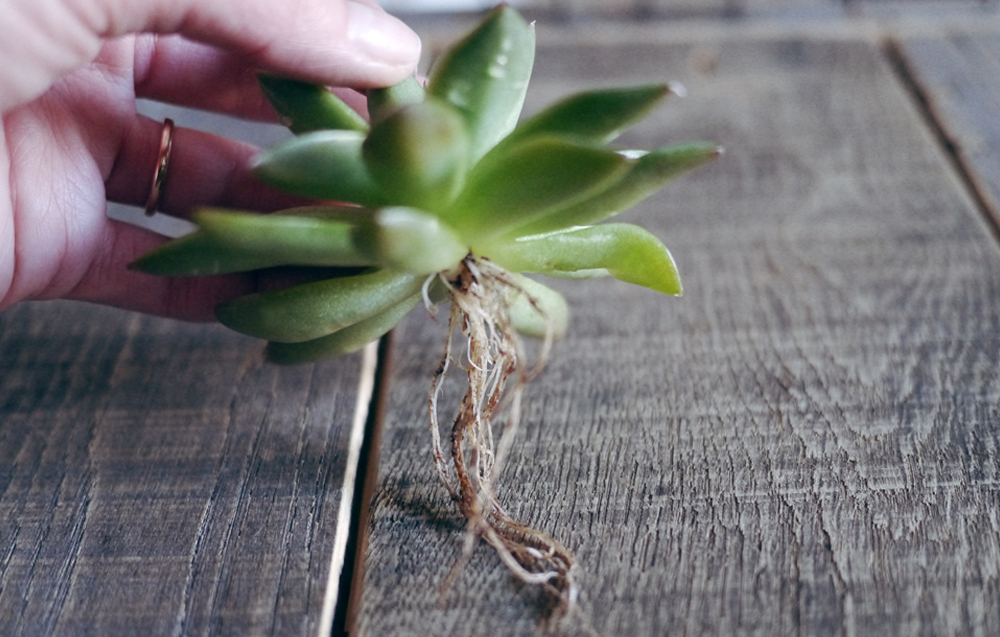
1. Find a cactus or succulent that will fit the chosen hydro terrarium size. We get ours locally in New York at this magical place near our store. Take the cactus or succulent plant out of the pot and completely wash away the soil attached to the roots with water. If the main plant or the roots are damaged, bacteria might invade and the plant might rot. Wash the plant gently, so as not to damage it.
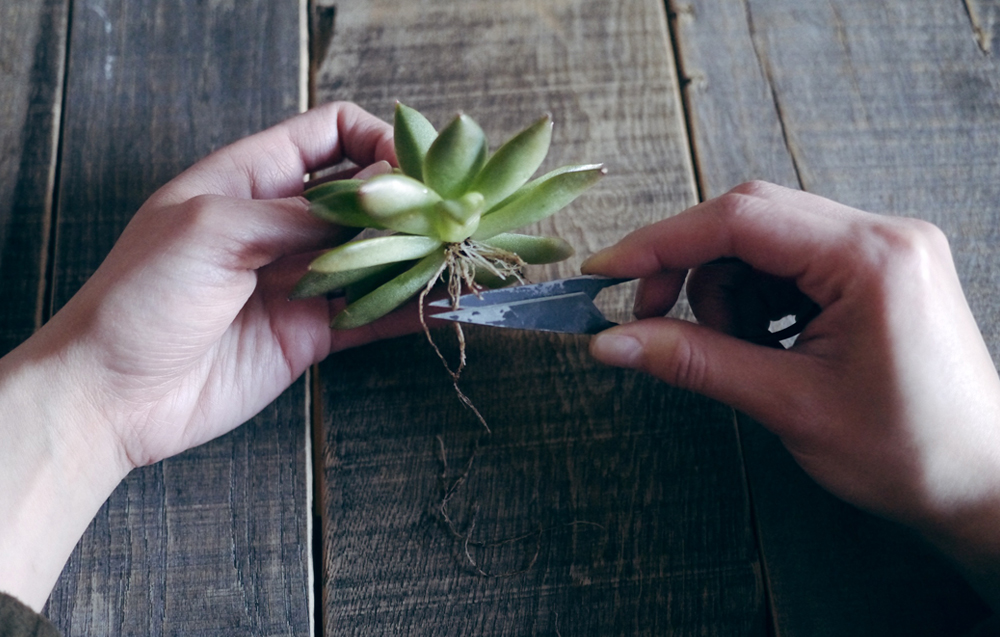
2. After the soil is washed away, first cleanly cut away the roots that had been growing in the soil, leaving around a half inch of root attached to the base. This way, new roots that are suited for hydroponics will grow from the cut ends. Use sharp plant shears. The plant will grow without a problem without its roots being cut, but it will be more stable with hydroponic roots. Depending on the season and the type of plant, it might take time for the hydroponic roots to develop, but if the cut ends are kept submerged in water, the roots will grow smoothly.
3. Once the roots are cut, allow the cut ends to dry completely. This is dependent on the season but should take generally 1-2 days.
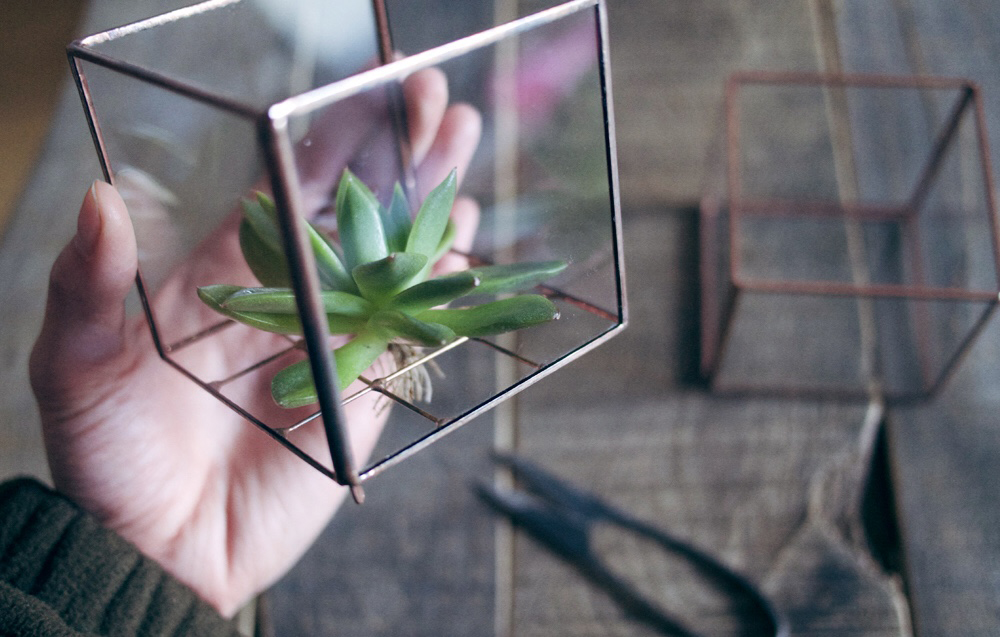
4. Once the roots are cut, place the cactus or succulent in the center of the trellis (metal grid) on the upper part of the container.
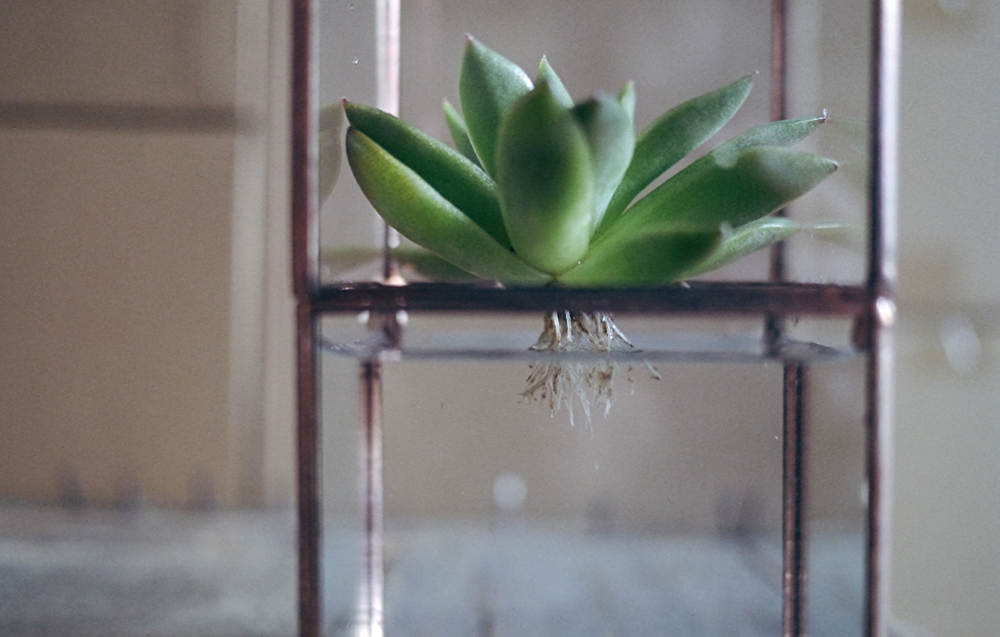
5. Put water in the lower part of the container, and try to regulate the water level to keep the cut ends submerged as detailed in step 2. (If the main part of the plant is kept submerged in water, it will rot. It is best to submerge the cut ends only partially.
6. Use tap water. The chlorine in tap water serves to sterilize many types of saprophytic bacteria, including the mildew that grows in water, and makes it more difficult for diseases to develop.
7. How often to change the water depends on the plant. Generally, once the plant is hydroponically stable, the water may be kept without being changed for long periods of time due to the plant’s natural self-purification abilities, but until the plant stabilizes, it is best to change the water frequently.
[ While the roots are still short and the plant is not yet hydroponically stable]
– Try to change the water whenever it becomes dirty.
[Once the roots are grown and the plant has become stable hydroponically]
– As the water level drops or evaporates, it’s alright simply to top off the water without changing it so that the roots remain submerged. However, the plant will grow best and be the most stable if the water is changed completely about once a month.
8. To gauge the proper water level, try to keep the water at about where the roots were cut. Even if the water is changed infrequently, the plant’s growth will be healthy.
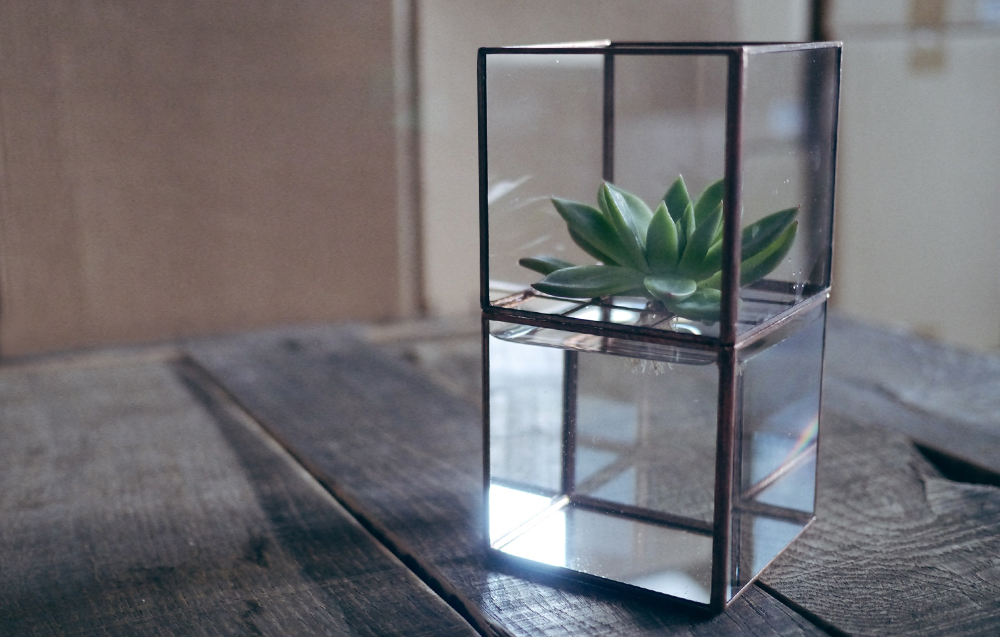
9. Cacti and succulents enjoy locations with good exposure to sunlight. Be sure to grow your plant in a sunny location.
10. If mildew grows on the root or plant during hydroponic growth, gently wash it off with tap water and wipe it off with a cotton swab or tissue sprayed with an alcohol-based antibacterial solution made from natural ingredients, such as those made for use in the kitchen. Antibacterial agents for plants are also available, but alcohol-based solutions with natural ingredients are safer.
Also if you add silicic acid or charcoal to the bottom of the water, it will inhibit the propogation of mildew and bacteria through its water-purifying capabilities, and you will have to change the water less frequently.

11. A substance similar to white algae might grow on the surface of the root, but these are merely “root hairs” – tiny hairlike roots that grow on the surface of the roots. They are important, as they increase the surface area of the roots and allow them to take in more water and nourishment. As the roots grow thicker, the root hairs will decrease in number, so even if their appearance is a bit worrying, be patient. Root hairs will come off easily if washed with water, but this will not cause the plant to wither, so relax.
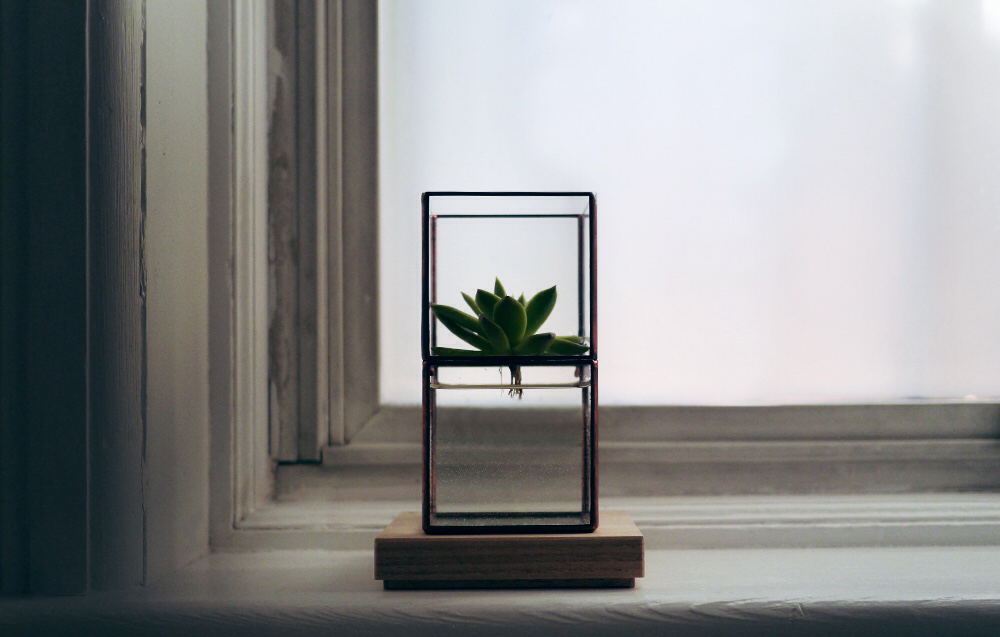
Hope that helps you get started with hydroponics. Good luck, and happy planting!
The 10¹² Terra collection can be found here.



